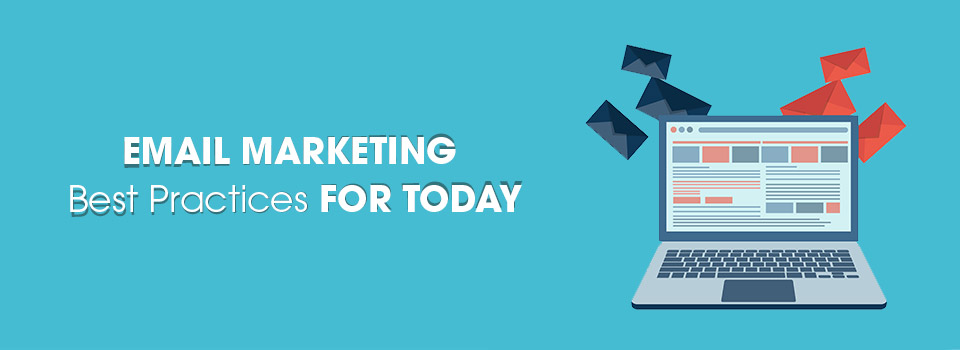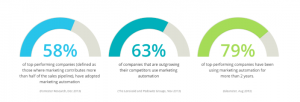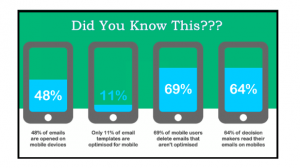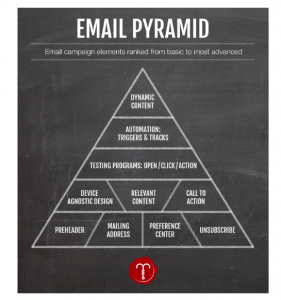Email Marketing Best Practices For Today

According to a Statista, there will be more than 5.6 billion active email accounts by the end of this decade. It only goes to say that email will continue being one of the most promising channels for communication – especially for businesses. But more importantly this also means that as more people embrace the use of the medium, businesses will need to innovate to keep up with the evolving trends and needs of both existing and, new users in order for them to make the channel work. Here are some email marketing best practices that industry experts absolutely swear by.
Executing a successful email marketing campaign is no longer just about a great discount that you can offer. Marketers need to look into key data points before even planning a campaign to promote their business. This includes data points like where their target market is accessing emails from, at what time are they reading these emails, what kind of emails do they prefer receiving and which ones do they respond to, what frequency of emails do they prefer from business they are actively interacting with, etc.
To stand out, it is important that email marketing best practices that one adopts are tailored to suit their target market – almost on an individual 1:1 basis.
So to ensure that your next email marketing campaign delivers the results you expect from it, we put together a list of email marketing best practices that you should be following today. These come from the aggressive A/B testing we have been conducting in-house, tips from industry experts and of course, hacks that the top grossing businesses have been making use of.
Email marketing best practices for today
1. Create an automated email marketing strategy
If your email marketing strategy is the same old boring routine of sending out weekly or bi-weekly long form newsletters with a call-to-action tacked on at the end, it’s in sore need of an overhaul.
Email marketing best practices suggest that an email campaign that works is actually focused on engaging the target audience on a regular basis. The business that consistently adds value to its list, is the one that sees greater returns.
Now, we understand perfectly that doing so manually might seem like a herculean task for pretty any non-enterprise level businesses. That’s where email marketing automation comes in.
Automating your emails enables you to communicate with your audience on a regular basis in a more timely, relevant and personalized manner. It makes use of customer data to decide on optimal triggers for businesses – it could be the timing, their stage in the sales cycle or even the last interaction they had with your business.
Automated emails are known to have a 68% higher open rate and 229% higher click rate than their conventional broadcast counterparts.

Analyze your current business processes – from sales to onboarding. Use the data obtained to figure out the optimal customer journey your target audience needs to convert into customers. Then scope out the range of changes you’ll need to make to your current system to get there.
For instance, you can automate your emails when onboarding a new user to your product. The first email could be a welcome email that introduces them to the primary features of the product, the second could focus on nudging them towards using the first feature and how, the third on the second feature, and so on.
This also enables you to ensure that your user is onboarded well and understands your product completely. It will also help you identify stages wherein your user gets confused or doesn’t know how to proceed – once you identify these gaps, you can create a personalized process to circumvent these issues.
Marketing Automation software such as SalesPanda allow you to create effective drip marketing email campaigns to bolster the lead conversion ratio of your business. You can create email campaigns based on audience behaviour triggers to personalize their journey for better conversions.
2. Personalize your email marketing campaigns
According to another study by Radicati, you will be receiving 7% more emails in your inbox this year. This only goes to show that going forward, it’ll be even more difficult to make your e-mail stand out from the mass of other promotional mails and convince your recipient to grace you with a click.
This is precisely where the need to create personalized or contextual e-mails comes in. Personalization of emails can be achieved by sending emails based on customer behaviour. The idea is to be able to push out the right message at the right time, to the right people, to capture their interest.
The best practice behind successful personalization, is to successfully segment your target audience based on their past actions, preferences and other similar parameters. When you segment your email list, you can then send different emails based on their points of interest to bolster your open rate.
Every customer is different and might relate to a different pain point – you need to be able to identify this pain point and create a personalized journey for each customer through your emails. No one in today’s hyper-informed world wants to do business with a stranger who does not even understand their pain points.
To segment your audience well, use of tracking and analytics tools, conduct surveys around topics of interest to them and invest time in social listening. These will give you the insights you need to determine what your audience is looking for, who they are engaging with, what they are saying about your brand and what expect to see in the near future.
Personalized email messages improve click throughs on a call to action by an average of 14% and conversions by 10%. (Aberdeen Group)
3. Optimize your email marketing campaigns for mobile
Mobile e-mail can now account for upto 15-70% of email opens based on the business’ target audience, product and email type. This means, to grab your audience’s attention, you need to reach out to them where they are the most active – mobile devices.

While mobile friendly emails are no foreign concept, it is no longer just about using mobile-friendly templates. You need to make every aspect of your e-mail optimized for the mobile medium. The email content and format should be able to adapt the screen of the device it is being read on, and the pages should be responsive and easy to scroll through.
Templates and responsiveness are just one aspect of mobile optimized emails. The other aspect that plays a major role in how the recipient interacts with the e-mail is the content. Here are a few tips to ensure that your content is mobile optimized:
-> Make your emails easily scannable – offer content that is important and use shorter paragraphs
-> Ensure that your call-to-actions stand out from the other links in the email body
-> Choose different fonts to highlight important messages and direct your readers attention
-> Create a subject line that is informative, yet still generates curiosity
-> Don’t ignore the pre-header text and make it as descriptive as possible while using the minimal amount of words

4. Focus on sharing knowledge in your email marketing campaigns
One of the most important email marketing best practices, is to be valuable to the consumer. The consumer market today no longer tolerates pushy sales pitches. So all those newsletters and emails you sent across boasting about your product/service are likely to be ignored, or worse, leave a negative impression. Your focus should be to use emails as a channel to educate your audience about your brand.
Share information about your products and services, and how they are designed to resolve a pain point in their lives. The e-mail content should be focused towards providing more value to your reader rather than your sales goal. If you don’t offer something that a reader can take away from going through your email, they aren’t going to design your next email worthy of their attention.
Consider all the topics that your audience is engaging with online that have even the slightest relation to your business and offer content on the same topics occasionally so that you become their ultimate source of information. The more they come back to you for information, the more favorable opinions the build, and the higher the probability of them converting.
5. Make analytics and reporting the core of your strategy
Your campaign could be optimized for mobile devices while using the best content you could come up with, and could still yield utterly subpar results. Why? Well, that’s for you to find out. Maybe your content wasn’t good enough? Did you consider the right target personas? Did you make a crucial mistake with your profiling? The only way to find out is to analyze and fix your mistakes.
Make no mistakes, no one nails the right email marketing strategy in their first try, and it would be on the foolish side of optimistic if you think you could be the exception. This is why it is important to consistently A/B test your e-mails and track the performance for every segment closely.
Apart from the conversions, track the engagement rates that your emails have been able to generate. Use these metrics to understand what your readers are clicking with the most, what more would they be most interested in reading and where and why the un-subscriptions are happening. The more engaged your audience remains, the longer you can retain them and higher your chances of monetizing them.
6. Choose an email marketing tool that scales with you
For you to follow through all the email marketing best practices, you need to equip yourself with the right set of tools – starting with an email marketing automation tool. Ideally, this email marketing software should seamlessly integrate with your existing process of sales and marketing.
At the same time, it should also give you the ability to scale as you go. With a flexibility of how you use the email marketing for your business, it becomes easier to use the channel to grow your business. Here are a few other features it should definitely offer:
-> Easy list building and contact segmentation
-> Editable and customizable optimized email templates
-> Easy text and HTML email creation
-> Comprehensive email analytics
-> Rapid 1:1 email capability
See how SalesPanda can help you automate your email marketing campaigns
Making email marketing best practices work for you
The truth behind email marketing is that different things work for different types of businesses, and all you can use are general guidelines to help you as you slowly figure out what would work best for your business.
But following some of the email marketing best practices, has gotten businesses across all industries, reap the benefits of email and drive a higher ROI on every $1 spent on an email marketing campaign.
For instance, no matter what industry you are in, it will never not be important to understand who you’re addressing and how you can add more value to them if you want to be able to strategize an effective marketing campaign.
Similarly, another one of the universally positive email marketing best practices, is to keep in consistent optimization in mind. You can’t just set up an email marketing campaign and forget about it. For better results, you need to measure all the key metrics and optimize your strategy accordingly, for success. This could be something as simple as the call-to-action that you include in the email body, or something as complex as changing the sequence of your drip emails at any stage of the sales cycle.
What other email marketing best practices do you think business marketers should follow closely? We’d love to hear some of the hacks that you have been making use of.
